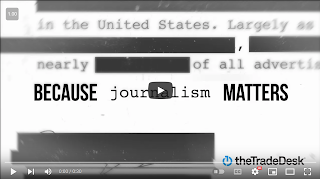Thomas D. Aaron Wazlavek, Esq. has published an article in comparative labor law: The Pond Separates Cultures but Not Values: A Comparative Look at the French Codification of Right to Withdrawal of Labor and the American Concept of At-Will Employment. The article appears in the Florida Journal of International Law at the University of Florida Levin College of Law. Here is the abstract:
The differences and similarities between the United States common law concept of “right to work” and the modern development in France of the right to withdraw labor following the “Yellow Vest” movement in 2018 demonstrate a parallel diminution of workers’ rights. These changes are motivated by the same values inherent within capitalism that are superimposed through the law. This Article analyzes the social and legal contexts in both countries that demonstrate that the superimposition of these values through law is a continuing modern western trend. The key difference is that while the French model is designed to decrease the pressure for strike actions by workers, it also serves as a protection to workers as compared with the American model which exists as a tool to remove workplace protections by substantially altering the terms and conditions of employment. Further, this Article demonstrates that these concepts are both divergent and convergent in terms of core shared values and the peripheral aspect of laws setting cultural norms. This Article then concludes through comparative analysis that while the French right to withdraw labor is a product of legislative supremacy, and the American view within the common law is that at-will employment is the standard, the French model is a product of generations of social negotiations. The American model is a product of the easily swayed influences within the common law that allow a new legal theory with little to no precedential value at the time of its proposal to be adopted in sweeping fashion with very little civil discourse.
An attorney living and working in Rhode Island, Wazlavek (blog, LinkedIn, Twitter) presently serves as a contract coordinator for Teamsters Local 251. It's not uncommon to see him on a Rhode Island street corner alongside sign-wielding workers. He had already a wealth of experience in the labor movement before he went to law school. He taught me a great deal about organized labor—its value when it works the way it's supposed to—and I was able to contribute torts and comparatism to his impressive repertoire.
The Pond started as a paper in Comparative Law, co-taught by an embedded librarian, the esteemed Dean Peltz-Steele, and me and tracks one of many remarkable parallels in the cultural evolution of the United States and the French Republic. Just yesterday I read Rachel Donadio's fascinating treatment of secularism, or laïcité, in The Atlantic. Observing the shared roots of the French principle with American anti-establishment doctrine, Donadio observed:
The histories of few countries are as deeply intertwined as those of France and the United States. Both nations are products of the Enlightenment, and each sees itself as a beacon among nations. Both embody a clear separation of Church and state. In the United States, the separation is defined by the establishment clause of the First Amendment, which prohibits the government from making any law "respecting an establishment of religion" or obstructing the free exercise of religion. The First Amendment was inspired by the earlier Virginia Statute of Religious Freedom, adopted in 1786, the work of Thomas Jefferson. Jefferson was ambassador to France when the French Revolution began, and the Marquis de Lafayette consulted him when drafting the revolutionary Declaration of the Rights of Man and Citizen, passed in 1789. Article 10 of that document states, "No one may be disquieted for his opinions, even religious ones, provided that their manifestation does not trouble the public order."
A shared legacy on labor regulation might not be traced so easily to the 18th century, but I would contend that American and French thinking about work and life is plenty in common. Wazlavek maps that common cultural territory, and the article examines the social and economic forces that have prompted divergence, largely to the hazard of the American worker, and yet some recent convergence that prompted the Yellow Vest movement.
The article is Thomas D. Aaron Wazlavek, The Pond Separates Cultures But Not Values: A Comparative Look at the French Codification of Right to Withdrawal of Labor and the American Concept of At-Will Employment, 33 Fla. J. Int'l L. 75 (2021).
[UPDATE, Feb. 3, 2022:] Only two days after posting this item, I happened upon this compelling article as well: Stéphanie Hennette-Vauchez, Religious Neutrality, Laïcité and Colorblindness: A Comparative Analysis, 42 Cardozo L. Rev. 539 (2021).











